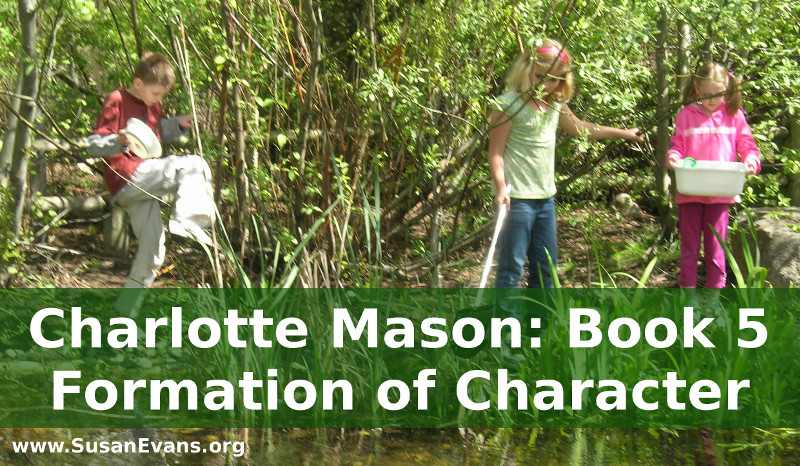This Charlotte Mason book is actually a series of stories and examples of character formation. The first story involves a five-year-old boy who throws tantrums. His parents cure him of this character defect by suddenly having him change his thoughts when he feels that he is about to throw a tantrum. At first his parents excitedly change his occupation as soon as he is about to have a meltdown. Soon his habit begins to break because it is replaced by a new habit – running around the outside of the house. The boy finally takes matters into his own hands and runs around the house whenever he is tempted by his temper. Eventually he is cured of the bad habit.
The second story deals with a girl who flitters from one thing to another, never finishing anything. The mother is advised to give short, interesting lessons to train the girl in the habit of attention. Something attempted, something done – this is the sense of accomplishment that the mother should build into each lesson so that the girl will feel a sense of accomplishment, of growth, and of moving forward each day, and it will give her a desire to finish each day’s work.
The third story is about a girl who pouts and goes through life as though under a cloud. The cure is to tell the child that she hurts the entire family because her mood pulls down the moods of everyone else in the house. Will she only think of herself, or will she love her family by choosing to think positive thoughts and to be joyful?
The fourth story is longer, and it is about depression. How does the young woman get out of her depressions? She purposely thinks positive thoughts and forces herself not to dwell on sadness. At first it is difficult, but once a person establishes a habit of thinking positively, she will not get depressed any more.
The next chapter isn’t a story. She rants and raves about our arbitrary actions as parents, and I was deeply convicted. If other people treated us the same way that we sometimes treat our children, would we put up with it? For example, does the punishment always fit the crime? If a toddler unknowingly breaks something irreplaceable by accident, do you get angry?
The sixth chapter is a story about a girl who lies outrageously by telling unnecessary lies just to be interesting. The parents must teach her the difference between truth and fiction by reading the fairy tales and enjoying the fiction. Then give exercises in truth by giving an oral message for her to deliver to somebody else in the house. That person writes down what the girl said, and the girl takes the paper back to the mother to see that she has reported only the truth.
The seventh story deals with a boy who is always forgetful. He needs to learn the habit of paying attention. When he was little, he should have been trained to pay attention by having him occupy himself a little longer with some plaything than he did the previous day. However, now that he is older, the parent must put interest into the thing that needs to be remembered. Every night, have him fill in a chart: “Remembers” and “Forgets.” Put a tally mark under the correct heading. He is fighting a battle with his forgetfulness, and he might lose the fight if he does not try harder. Most boys will take up the challenge and win the fight by getting more tally marks on the “Remembers” side.
The eighth story is about a woman who pretends to be sick all the time to get recognition. She needs to become aware of her problem and find another way to get recognition.
There are many more stories and examples in this book. They are helpful because parents can find solutions to character problems in their children.
Related product: Using Journals to Teach Writing





